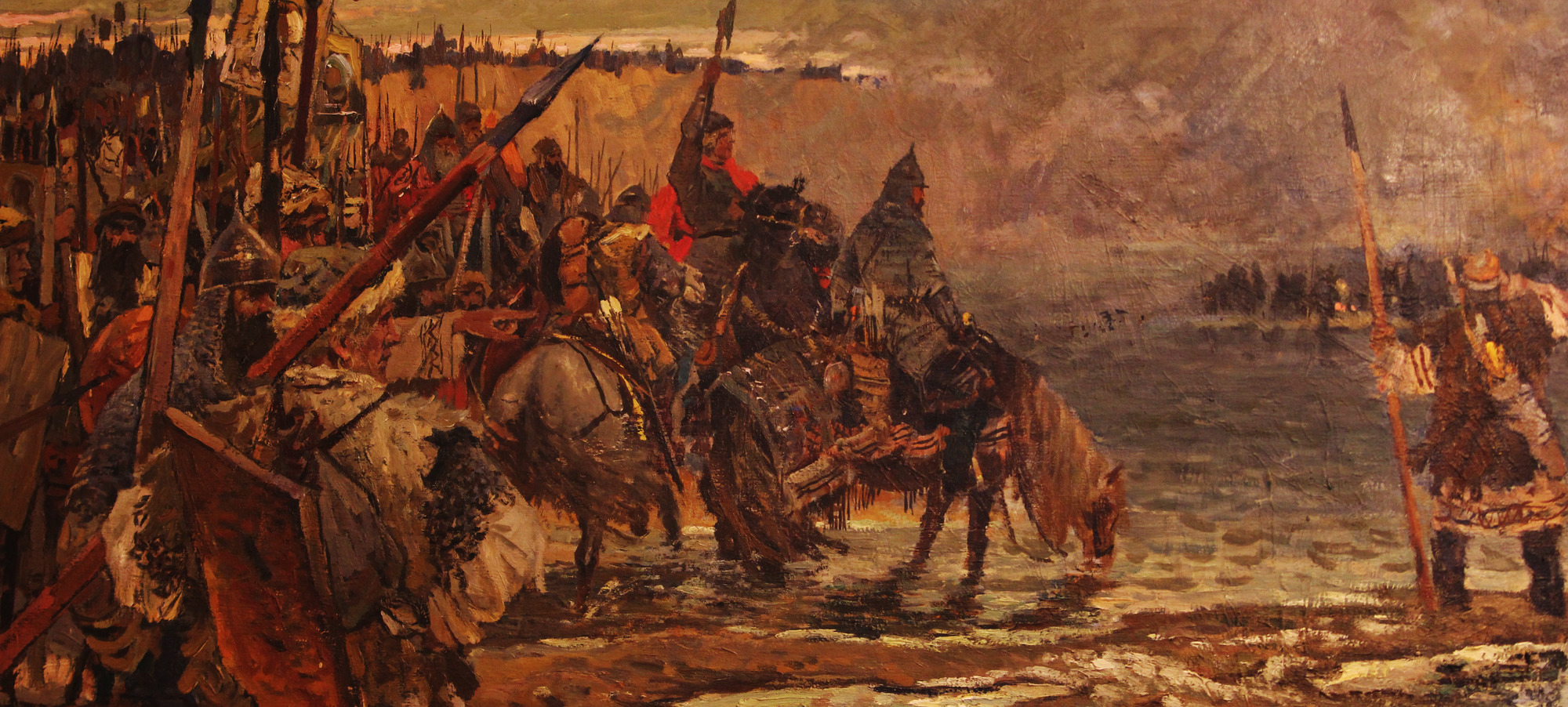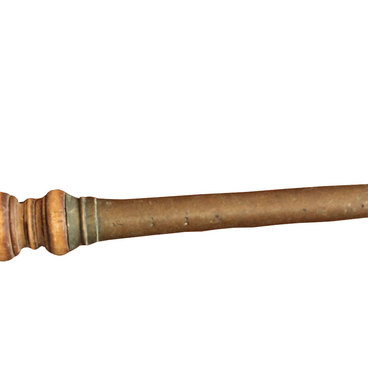The exhibited painting Standoff on the Ugra River portrays the military action that put an end to 250 years of Mongol-Tatar yoke. The standoff between khan Akhmat and Prince Ivan III went down in history as the Standoff on the Ugra River.
We know about this event from the chronicles surviving to this day – Moscow, Rostov, Lvov and Sofia. The authors of the chronicles coming from various social classes were contemporaries of the described events. According to the researchers, they were all in Moscow during the invasion of the Great Horde Khan Akhmat.
Historians believe that the reason for Khan Akhmat’s march on Moscow was the refusal of Moscow Prince Ivan III to pay tributes to the Horde. In 1480 the enraged Khan supported by King of Poland and Lithuania Casimir IV launched an offensive on Moscow to repress its slave but the march failed. From spring to late autumn, the nomads tried to open for their troops the southwestern routes of approach to Moscow but never managed to cross the border rivers of Oka and Ugra that protected those territories.
According to chronicles, on June 8, 1480 Russian troops set off to military lines on the Oka and were positioned in such a way that did not let the nomads force a crossing in its central section. The Khan’s troops moved around through Lithuanian lands to the right bank of the Oka. In late September of the same year Moscow Prince Ivan III managed to steal a march on Akhmat and transferred the troops to the left bank of the Ugra river, blocked the way for the nomads and occupied all convenient locations for crossing.
The battle sight was the confluence of the rivers Ugra and Rosvyanka. The battle started on October 8 but for four days neither army moved. The Horde used bows and arrows, the Moscow troops – canons, arquebuses and tyfyak – small arms that shot with metal or stone shots. Khan’s troops were shot at any attempt at crossing and gradually the artillery spread real panic among the nomads. On November 11 Akhmat fled.
It is generally believed that this event marked the end of the Mongol-Tatar yoke in Rus. At the same time, the standoff was the start of formation of the unified independent Russian state with the center in Moscow.
We know about this event from the chronicles surviving to this day – Moscow, Rostov, Lvov and Sofia. The authors of the chronicles coming from various social classes were contemporaries of the described events. According to the researchers, they were all in Moscow during the invasion of the Great Horde Khan Akhmat.
Historians believe that the reason for Khan Akhmat’s march on Moscow was the refusal of Moscow Prince Ivan III to pay tributes to the Horde. In 1480 the enraged Khan supported by King of Poland and Lithuania Casimir IV launched an offensive on Moscow to repress its slave but the march failed. From spring to late autumn, the nomads tried to open for their troops the southwestern routes of approach to Moscow but never managed to cross the border rivers of Oka and Ugra that protected those territories.
According to chronicles, on June 8, 1480 Russian troops set off to military lines on the Oka and were positioned in such a way that did not let the nomads force a crossing in its central section. The Khan’s troops moved around through Lithuanian lands to the right bank of the Oka. In late September of the same year Moscow Prince Ivan III managed to steal a march on Akhmat and transferred the troops to the left bank of the Ugra river, blocked the way for the nomads and occupied all convenient locations for crossing.
The battle sight was the confluence of the rivers Ugra and Rosvyanka. The battle started on October 8 but for four days neither army moved. The Horde used bows and arrows, the Moscow troops – canons, arquebuses and tyfyak – small arms that shot with metal or stone shots. Khan’s troops were shot at any attempt at crossing and gradually the artillery spread real panic among the nomads. On November 11 Akhmat fled.
It is generally believed that this event marked the end of the Mongol-Tatar yoke in Rus. At the same time, the standoff was the start of formation of the unified independent Russian state with the center in Moscow.


